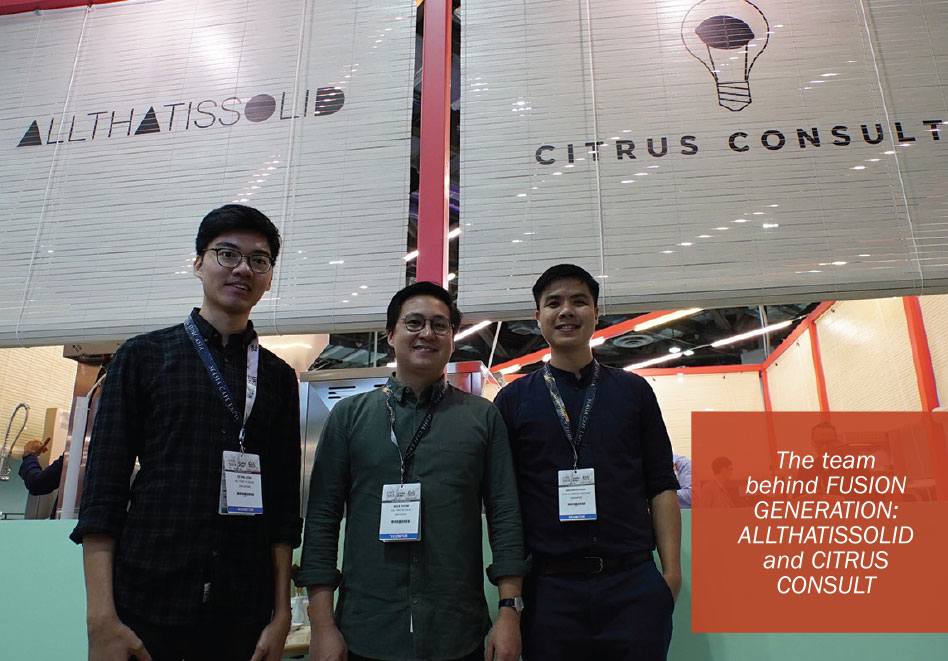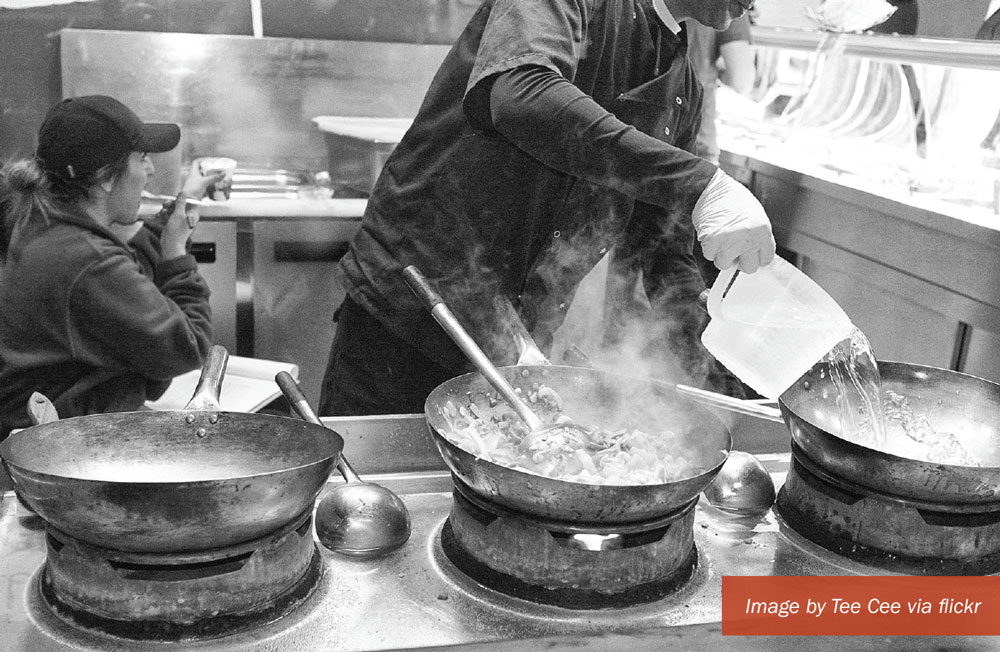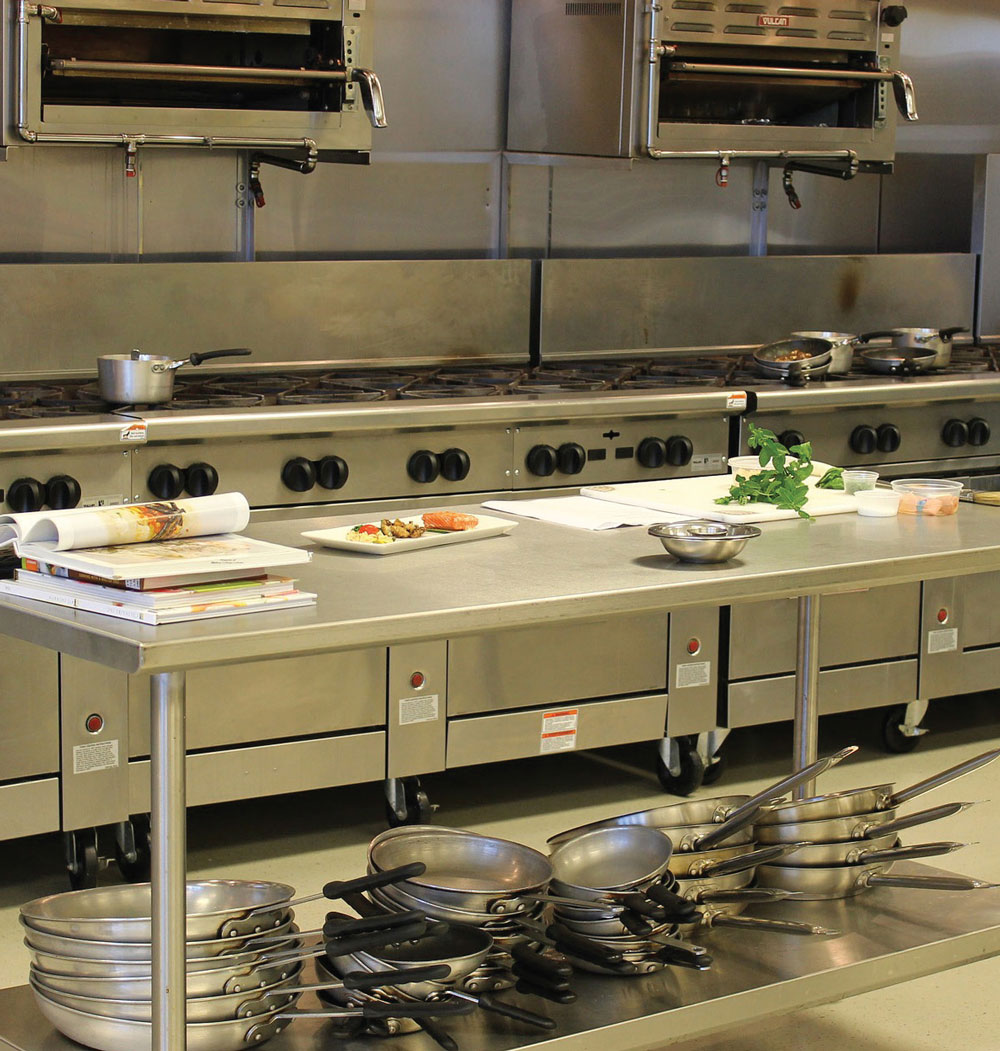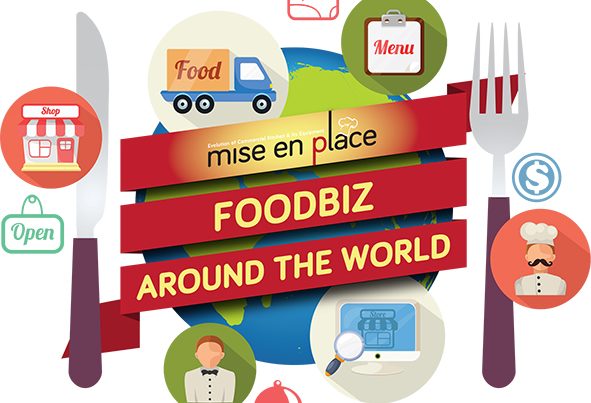A Merger Between The Old And New Kopitiam Concept

Noticing a need to bring about some change in the local F&B scene, Brandon Kua, Founding Partner of Citrus Consult together with Alex Chew, Founding Partner of ALLTHATISSOLID realised an untapped opportunity in the traditional Southeast Asian kopitiam business model. This realisation gave birth to the Fusion Generation concept which will not only modernise the traditional kopitiam concept but also educate the public on the current commercial kitchen technology that can help improve the traditional kopitiamstyle cooking process.
Looking back at the traditional model of a kopitiam or coffee shop, the owner of the kopitiam would normally rent out the space in his/her shop to individual hawker stall owners and run the beverage counter at the shop. In addition to paying rent to the shop owner, these individual hawker stall owners will have to come up with the capital in order to set up their own stall and purchase stall equipment as well as source for food ingredients from suppliers before cooking and selling the food to customers at the coffee shop. This is not only cost-intensive but also labour-intensive for individual stall owners who have to begin their days very early in order to prepare the food and sell it at the stall.
A CENTRAL KITCHEN
Similar yet distinct to the traditional kopitiam/hawker style concept, Fusion Generation offers hawker sellers a set-up stall in order to prepare their dishes in at an agreed rental price. These vendors will no longer need to come up with an initial capital in order to rent or purchase their own stall and cooking equipment but simply rent the stall and space from the premise owner. These vendors will also gain an audience and foot traffic at the set location, for example, a mall.
The most notable difference that the Fusion Generation concept offers is that all vendors will share a fully equiped central kitchen where cooking and preparation of meals can be done. This central kitchen will be equiped with modern cooking equipment that all vendors can share and use in order to prepare their dishes. This will also reduce the manpower required to carry out the cooking and preparation of meals.
ADVANTAGES OF A CENTRAL KITCHEN
Having a central kitchen based on the Fusion Generation kopitiam-style concept will bring a whole host of benefits to both the individual stall owners and the premise owner. Among these are:
A Minimised Footprint
The idea behind a central kitchen is to minimise the footprint of individual hawker stalls while allowing for the concept to scale up. In the traditional kopitiam concept, individual hawker stalls together with their various cooking equipment can take up a large portion of the shop. The Fusion Generation concept aims to reduce this large footprint by setting up a central kitchen where all cooking equipment will be placed leaving just the stalls and simple preparation equipment at the front of the shop.
Efficient Food Sourcing
Another benefit of the Fusion Generation concept is a consolidated procurement of food ingredients and supplies. By consolidating as a group, individual stall owners will no longer have to source for their own food suppliers as they can purchase all their food items and ingredients at a lower cost from a single food supplier that is recommended by the premise owner. This is one way that vendors can bring down their food costs. Additionally, by consolidating and purchasing food from a single supplier, food waste by individual stall owners is also reduced in centralised kitchen operations.
Use Of The Cook Chill Process
Before serving their dishes to customers upon order, individual stall owners who have prepared or cooked their food in the central kitchen can make use of this nifty food technology to preserve their food: the cook chill system.
The cook chill process is a major advancement in prepared food technology that ensures consistent quality in every batch of food that is cooked while reducing the labour required for preparation and serving. Using this process, stall owners can prepare large batches of food in the central kitchen and rapidly chill the food in a blast chiller until ready to be reheated and served in the stall at the front. The cook chill process can provide a high degree of quality and fresh cooked taste.

Greater Food Safety
In the traditional kopitiam setting, individual vendors would usually do all the cooking at home and bring the cooked food to the stall to serve to customers upon order. While this has been the practice for ages, transporting the food from home to stall can compromise its safety. To curb this food safety issue, vendors can use the centralised kitchen in the Fusion Generation kopitiam concept to to cook, prepare and store, ready for re-heating and service at the stall in the front. This keeps the food from being exposed to any unwanted microorganisms or contamination.
Improved Hygiene Practices
Hygiene can be an issue in traditional coffee shops that have multi-vendors all cooking and cleaning in the their respective stalls. Some of these stalls and surrounding areas can be unhygienic or dirty, making it an unpleasant environment for patrons to eat in. The Fusion Generation concept aims to promote hygiene in the premises by keeping all the cooking and cleaning of dishes and utensils in the central kitchen using modern equipment to ease this process. This leaves the stalls in the front relatively clean as only minor food preparation is done there.

Heat Reduction And Energy-Saving
When entering a traditional coffee shop, more often than not, you will the heat emanating from the individual stalls that are cooking or heating up the food as you walk by. Not only is this unpleasant, the odours also stick on your hair and clothes for a good while. By having a central kitchen, food is no longer cooked in the front, so heat is kept to a minimum or it is completely non-existent, making it the premise a comfortable place to dine at. Last but not least, by having a central kitchen that uses modern energy-efficient cooking equipment, the amount of energy and water usage can be greatly reduced. Premise owners can choose energy-saving equipment based on professional advice from food service consultants.
While there are many businesses that have tried to emulate the aesthetics of the traditional coffee shop model, for instance food courts and new age kopitiams, there is a still a void in modernising this traditional coffee shop model on a production scale that would not only help individual hawker stall owners cut down on their costs but also create business efficiency and promote cleanliness in the typical kopitiam style business setting. Fusion Generation by Citrus aims to make some conceptual changes to the traditional design of the hawker style concept by fusing technology yet keeping the charm and nostalgia of the traditional coffee shop model safely intact.










